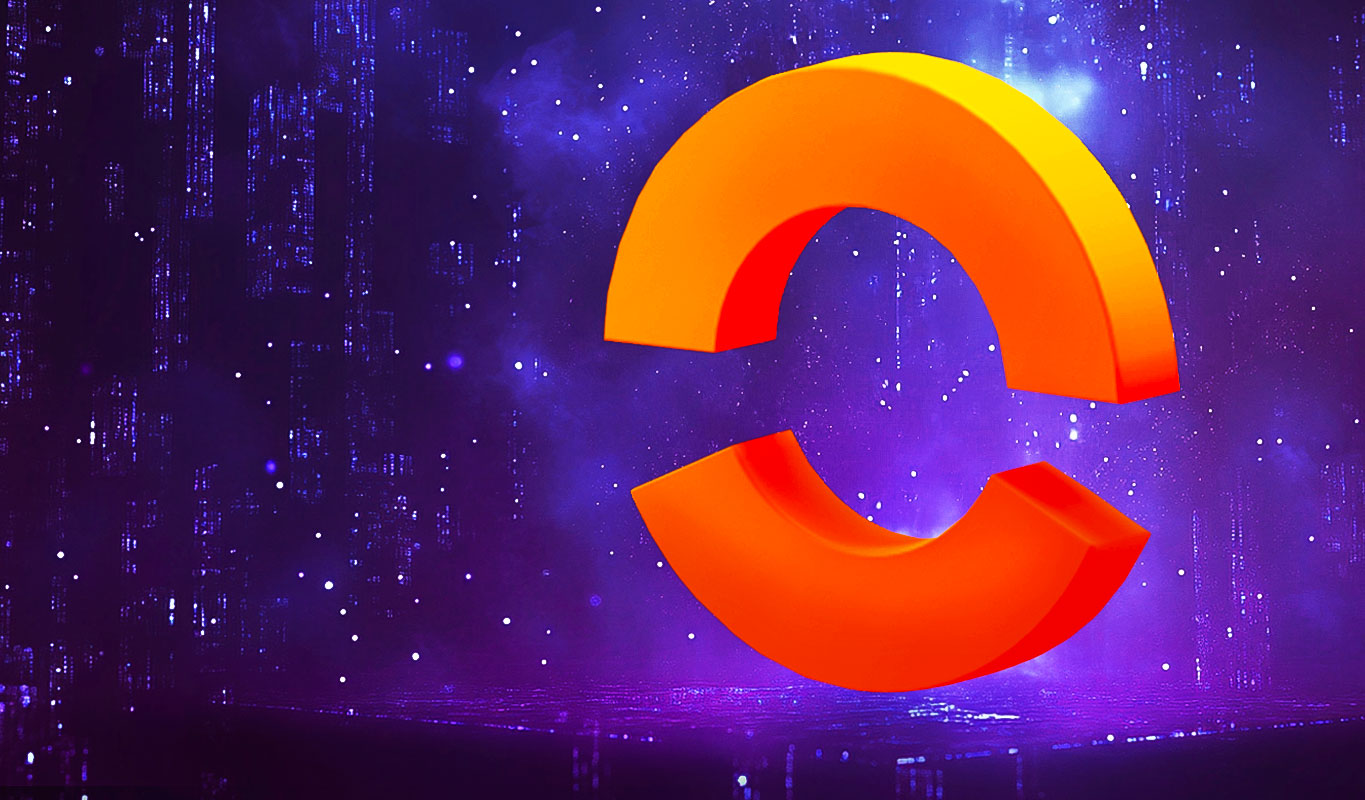Blockchain
Blockchain groups challenge new broker reporting rule
Published
2 days agoon
By
admin

Three prominent blockchain advocacy organizations filed a lawsuit challenging the Internal Revenue Service’s new broker reporting requirements.
The organizations argue that the rules could severely impact the U.S. digital asset sector, particularly decentralized finance (DeFi).
The Blockchain Association, DeFi Education Fund, and Texas Blockchain Council jointly filed the legal challenge in the U.S. District Court for the Northern District of Texas.
They contended that the IRS and Treasury Department’s final “broker” rulemaking exceeds their authority.
The lawsuit specifically targets the rule’s expansion of the “broker” definition to include providers of DeFi trading front-end services, despite these entities not directly facilitating transactions.
The Blockchain Association CEO Kristin Smith called the broker rule “unconstitutional,” alleging that the IRS is violating the Administrative Procedure Act.
Today we’re taking action, filing a lawsuit that argues today’s broker rulemaking violates the Administrative Procedure Act and is unconstitutional.
We stand with our nation’s innovators and will continue working to ensure the future of crypto – and DeFi – is here in the United… https://t.co/CwZWzjwT5O
— Kristin Smith (@KMSmithDC) December 28, 2024
According to the Blockchain Association’s Head of Legal, Marisa Coppel, this overreach “would push this entire, burgeoning technology offshore” while infringing on the privacy rights of individuals using decentralized technology.
DeFi Education Fund CEO Miller Whitehouse-Levine expressed strong disappointment in the timing and scope of the regulation. Miller called it “midnight rulemaking” that threatens financial innovation.
The organization emphasized DeFi’s potential to make financial services more accessible, efficient, and consumer-focused.
Texas Blockchain Council President Lee Bratcher highlighted the practical impossibility of compliance. He stated that many actors in the decentralized ecosystem simply cannot access the information now required by the IRS.
“This regulatory overreach risks driving critical development overseas, threatening US competitiveness in the digital economy,” Bratcher stated.
The legal challenge comes after numerous stakeholders warned during the public comment period about the potential negative impacts on the digital asset industry. Crypto.news had earlier reported that DeFi proponents had promised aggressive action against the IRS policies.
Source link
You may like


Why I Capitulated And Started Buying MSTR


Bitcoin (BTC) Price Slumps to $92,000 as Long-Term Holders Keep Taking Profit


3 AI-powered altcoins to consider buying before January, one predicted to outperform DOGE and XRP


Can Cardano Price Revisit ATH in 2025?


Earn Bitcoin For Providing Liquidity Via Boltz Pro


Top Crypto Assets For Q1 2025: Grayscale Reveals Best Altcoins
Blockchain
MoonPay Considering $150,000,000 Acquisition of Crypto Payment Firm Helio: Report
Published
5 days agoon
December 25, 2024By
admin
The web3 infrastructure provider MoonPay is reportedly mulling a $150 million acquisition of the crypto payments provider Helio.
Fox Business reporter Eleanor Terrett reports that MoonPay is in talks over the deal, which would represent the crypto firm’s largest acquisition.
Helio aims to make “accepting crypto payments effortless for merchants and apps worldwide.” The payment provider supports major chains including Solana (SOL), Ethereum (ETH), Bitcoin (BTC), and Base.
“We power crypto checkouts for +6,000 merchants & apps, and millions of unique active wallets.
You can self-serve to set up a Helio merchant account in minutes & get paid instantly for E-commerce, pre-sales, subscriptions & digital products in USDC, SOL, ETH, BTC & 100s of digital assets.”
In June, the crypto payments firm launched a Solana Pay plugin for the e-commerce giant Shopify, enabling buyers to use SOL and hundreds of other crypto assets with automatic swaps to stablecoins.
MoonPay bills itself as the “world’s leading” web3 infrastructure firm.
“We provide end-to-end solutions for payments, enterprise-scale smart contract development, and digital asset management. Many of the world’s most iconic brands rely on MoonPay to power their Web3 strategies and ideas.”
The crypto firm has more than 20 million verified accounts and is supported in 180 countries.
Don’t Miss a Beat – Subscribe to get email alerts delivered directly to your inbox
Check Price Action
Follow us on X, Facebook and Telegram
Surf The Daily Hodl Mix
 

Disclaimer: Opinions expressed at The Daily Hodl are not investment advice. Investors should do their due diligence before making any high-risk investments in Bitcoin, cryptocurrency or digital assets. Please be advised that your transfers and trades are at your own risk, and any losses you may incur are your responsibility. The Daily Hodl does not recommend the buying or selling of any cryptocurrencies or digital assets, nor is The Daily Hodl an investment advisor. Please note that The Daily Hodl participates in affiliate marketing.
Generated Image: Midjourney
Source link
Blockchain
Blockchain auditor Hacken launches AI-powered MiCA-compliance tool for crypto firms
Published
6 days agoon
December 24, 2024By
admin

Blockchain security auditor Hacken is rolling out a new tool to automate security and compliance for web3 businesses as MiCA and DORA rules loom.
Hacken, an international blockchain auditor with Ukrainian roots, is rolling out a new solution that allows web3 businesses in an automated manner to comply with standards like Europe’s MiCA and DORA.
In a press release shared with crypto.news, Hacken co-founder and chief executive Dyma Budorin said the firm developed the so-called “Extractor” to address the “critical need for proactive monitoring and compliance in the crypto space.” According to the Tallinn-headquartered firm, Extractor brings compliance monitoring framework for web3 projects, making it easier to meet regulatory standards like MiCA, DORA, and ADGM.
Unlike other solutions available on the market, Hacken’s solution is said to be combining AML/CFT monitoring, transaction tracking, total value locked analysis, and circulating supply detection into a structured compliance approach. It also integrates real-time threat detection, automated safeguards, and post-incident reporting to ensure continuous protection and operational resilience, the press release reads.
Valentyna Kondratenko, Hacken’s legal counsel noted that beginning Jan. 17, 2025, DORA’s requirements “will become enforceable,” adding further that non-compliance “can result in severe penalties, such as fines of up to 2% of the total annual worldwide turnover or 1% of the average daily global turnover.”
It’s understood that the solution is compatible with multiple blockchain networks, including Ethereum and BNB Chain (formerly Binance Smart Chain), broadening its potential use.
MiCA regulations have created challenges for crypto companies aiming to expand in the European market. For example, crypto exchange Coinbase had to discontinue USDC rewards for EU clients due to MiCA, and later even delisted Tether (USDT) from its European platform.
Source link
Blockchain
Most Layer 2 solutions are still struggling with scalability
Published
1 week agoon
December 23, 2024By
admin
Disclosure: The views and opinions expressed here belong solely to the author and do not represent the views and opinions of crypto.news’ editorial.
Since pivoting to a layer 2-centric approach, the Ethereum (ETH) ecosystem has relied heavily on L2 solutions to scale. However, these solutions are struggling to compete effectively, especially under pressure from alternatives like Solana (SOL). During the recent meme coin craze, Solana attracted much of the activity due to its advantages: low fees, high transaction speed, and user-friendliness.
To understand the challenges, it’s essential to examine why L2 solutions have not demonstrated the scalability and cost advantages that were widely anticipated.
Why meme projects favor Solana over Ethereum L2s
Meme projects have significantly contributed to the recent surge in market activity. These projects favor Solana for several reasons beyond user-friendliness:
- Low fees: Solana’s low transaction costs make it ideal for fee-sensitive applications like memecoins.
- High speed: Solana’s multithreaded architecture enables high throughput, ensuring seamless user experiences.
- Better developer experience: Solana’s tools and ecosystem are optimized for ease of use, attracting developers and projects.
Why is scalability important?
Scalability is fundamentally measured by the number of transactions a blockchain can process. A highly scalable blockchain can handle more TXs while offering lower fees, making it crucial for widespread adoption and maintaining a seamless user experience.
This is especially important for grassroots projects like meme coins, many of which are short-lived and highly fee-sensitive. Without scalability, these projects cannot thrive, and users will migrate to platforms that offer better efficiency and cost-effectiveness.
Why Ethereum L2s aren’t up to the challenge
Architectural limitations of Ethereum. Ethereum has long faced scalability issues, and L2 rollups are its primary solution to these problems. L2s operate as independent blockchains that process transactions off-chain while posting transaction results and proofs back to Ethereum’s mainnet. They inherit Ethereum’s security, making them a promising scaling approach.
However, Ethereum’s original design poses inherent challenges. Ethereum’s founder, Vitalik Buterin, has admitted that “Ethereum was never designed for scalability.” One of the key limitations is the lack of multithreading in the Ethereum Virtual Machine. The EVM, which processes transactions, is strictly single-threaded, meaning it can handle only one transaction at a time. In contrast, Solana’s multithreaded architecture allows it to process multiple transactions simultaneously, significantly increasing throughput.
L2s inheriting Ethereum’s limitations. Virtually all L2 solutions inherit Ethereum’s single-threaded EVM design, which results in low efficiency. For instance, Arbitrum: With a targeted gas limit of 7 million per second and each coin transfer costing 21,000 gas, Arbitrum can handle about 333 simple transactions per second. More complex smart contract calls consume even more gas, significantly reducing capacity. Optimism: With a gas limit of 5 million per block and a block time of 2 seconds, Optimism can handle only about 119 simple transfers per second. Gas-intensive operations further reduce this capacity.
Unstable fees. Another major issue with Ethereum and its L2 solutions is unstable fees during periods of high network activity. For applications relying on low and stable fees, this is a critical drawback. Projects like meme coins are especially fee-sensitive, making Ethereum-based L2s less attractive.
Lack of interoperability between L2s. The scalability argument for having multiple L2s only holds if contracts on different L2s can interact freely. However, rollups are essentially independent blockchains, and accessing data from one rollup to another is as challenging as cross-chain communication. This lack of interoperability significantly limits the potential of L2 scalability.
What can L2s do to further scale?
Embed features to enhance interoperability. Ethereum L1 needs to do more to support interoperability among L2s. For example, the recent ERC-7786: Cross-Chain Messaging Gateway is a step in the right direction. While it doesn’t fully resolve the interoperability issue, it simplifies communication between L2s and L1, laying the groundwork for further improvements.
Architectural updates: Diverge from the existing L1 design. To compete with multithreaded blockchains like Solana, L2s must break free from Ethereum’s single-threaded EVM design and adopt parallel execution. This may require a complete overhaul of the EVM, but the potential scalability gains make it a worthwhile endeavor.
Future milestones
Ethereum’s L2 solutions face significant challenges in delivering the scalability and cost-effectiveness that applications like meme coins demand. To stay competitive, the ecosystem must address fundamental architectural limitations, enhance interoperability, and embrace innovations in blockchain design. Only by doing so can Ethereum L2s achieve the scalability needed to support widespread adoption and fend off competition from emerging blockchains like Solana.

Laurent Zhang
Laurent Zhang is the president and founder of Arcology Network, a revolutionizing Ethereum layer-2 solution with the first-ever EVM-equivalent, multithreaded rollup—offering unparalleled performance and efficiency for developers building the next generation of decentralized applications. With an executive leadership and innovation background, Laurent holds a degree from Oxford Brookes University. Laurent’s professional journey includes over a decade of experience in science, research, engineering, and leadership roles. After graduating in 2005, he joined MKS Instruments as an Algorithm Engineer. From 2010 to 2012, he worked as a research engineer at the Alberta Machine Intelligence Institute, followed by a position as a research scientist at Baker Hughes from 2012 to 2014. He then served as vice president of engineering at Quikflo Health between 2016 and 2018. Since 2017, Laurent has been the president of Arcology Network, being a visionary of a future where blockchain technology reaches its full potential, offering unmatched scalability, efficiency, and innovation.
Source link

Why I Capitulated And Started Buying MSTR
Bitcoin (BTC) Price Slumps to $92,000 as Long-Term Holders Keep Taking Profit
3 AI-powered altcoins to consider buying before January, one predicted to outperform DOGE and XRP

Can Cardano Price Revisit ATH in 2025?

Earn Bitcoin For Providing Liquidity Via Boltz Pro
Top Crypto Assets For Q1 2025: Grayscale Reveals Best Altcoins
Tether adds $700m Bitcoin to reserve address
Will HYPE Price Skyrocket As Staking Launches on HyperLiquid Mainnet?
2024’s loyalty overhaul: Blockchain’s promise for brands

Genesis-Era Ethereum Whale Sends $171,780,000 Worth of ETH to Kraken in 2024: Report
4 Crypto To Buy in 2025 Ahead of FTX’s $16B Claims Payout

SEND Arcade launches NFT entry pass for Squad Game Season 2, inspired by Squid Game
If XRP Lawsuit Ends, How High Could Ripple Price Go?
Crypto Crystal Ball 2025: How Hard Will Trump Fight for Bitcoin and Crypto?

Over $5 m in token unlocks are set for this New Year’s week

Telegram users can send gifts to friends, TON fails to pump

Bitcoin Could Rally to $80,000 on the Eve of US Elections

Institutional Investors Go All In on Crypto as 57% Plan to Boost Allocations as Bull Run Heats Up, Sygnum Survey Reveals

Crypto’s Big Trump Gamble Is Risky

A Kamala Presidency Could Be Just as Bullish for Bitcoin

Ripple-SEC Case Ends, But These 3 Rivals Could Jump 500x

SEC filing underway, Bitcoin rewards app Fold adopts FLD ticker

Cardano and the XRP price action lock in bulls vs bears battle as RCO Finance prepares for 3,000% surge

Tether CEO Paolo Ardoino Denies Rumors That Stablecoin Issuer Is Under Federal Investigation

Ethereum’s lowered yield might signal a paradigmatic shift in the ecosystem

A16z-backed Espresso announces mainnet launch of core product

Crypto Exchange OKX Moves To Support USDC Ecosystem by Adding Six New Trading Pairs

What is World Chain? Human-First New Blockchain Goes Live

Ripple Vs. SEC, Shiba Inu, US Elections Steal Spotlight

Trump’s Coin Is About As Revolutionary As OneCoin
Trending

 News3 months ago
News3 months agoTelegram users can send gifts to friends, TON fails to pump

 Bitcoin2 months ago
Bitcoin2 months agoBitcoin Could Rally to $80,000 on the Eve of US Elections

 Bitcoin2 months ago
Bitcoin2 months agoInstitutional Investors Go All In on Crypto as 57% Plan to Boost Allocations as Bull Run Heats Up, Sygnum Survey Reveals

 Opinion2 months ago
Opinion2 months agoCrypto’s Big Trump Gamble Is Risky

 Opinion2 months ago
Opinion2 months agoA Kamala Presidency Could Be Just as Bullish for Bitcoin

 Price analysis2 months ago
Price analysis2 months agoRipple-SEC Case Ends, But These 3 Rivals Could Jump 500x

 Bitcoin3 months ago
Bitcoin3 months agoSEC filing underway, Bitcoin rewards app Fold adopts FLD ticker

 Sponsored3 months ago
Sponsored3 months agoCardano and the XRP price action lock in bulls vs bears battle as RCO Finance prepares for 3,000% surge


